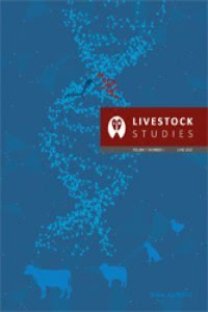Determination of the Fraud of Processed Meat Products by ELISA
Determination of meat origin is important for consumer rights, religious beliefs and national laws. Nowadays, people demand reliable information about the food they consume. The consumer’s choice is greatly influenced by the food composition detailed in labeling. In the case of processed meat products, this is going to be especially important because fraud cannot be visually assayed understood. Consumers cannot take measures except to trust the label information on the product. Enzyme-Linked Immuno Sorbent Assay (ELISA) is widely used technique for in detecting meat product authenticity because of its specificity, simplicity and sensitivity. 155 fast food samples (77 toasts, 38 hamburgers and 40 pizzas) sold as 100% beef products collected randomly from fast food restaurants in İstanbul, Tekirdağ and Edirne were analyzed by using ELISA. Fraudulent meat products were found in 53 (34.2%) of 155 fast food samples. Although it was detected horse-meat in two toasts, no pork was detected in samples.
Anahtar Kelimeler:
Meat product, animal species, fraudulent meat
___
- 1. Ali ME, Hashim U, Mustafa S, Man YBC (2012): SwineSpecific PCR-RFLP assay targeting Mitochondrial Cytochrome B gene for semiquantitative detection of pork in commercial meat products. Food Analytical Methods, 5, 613-623.
- 2. Anonymous (2016): Agricultural Products Markets-Red meat. TURKSTAT and TEPGE Calculations-2015-2016,https://arastirma.tarim.gov.tr/tepge/Belgeler/.../2018-Ocak%20Kırmızı %20Et. pdf , Accessed: 11/09/2018.
- 3. Anonymous (2018): Turkish Food Codex Communiqué on Meat and Meat Products, Notification No. 2012/74. Official Journal Number: 28488, 05.12.2012, http://www.resmigazete.gov.tr
- 4. Arun O, Ciftcioglu G, Sandikci Altunatmaz S, Atalay S, Savasçı M., Eken HS (2014): Effect of Processing on PCR Detection of Animal Species in Meat Products. Kafkas Univ Vet Fac Jrnl, 20(6), 945950.
- 5. Asensio L, González I, García T, Martín R (2008): Determination of food authenticity by enzyme-linked immunosorbent assay (ELISA). Food control, 19(1), 1-8.
- 6. Ballin NZ (2010): Authentication of meat and meat products. Meat Sci, 86(3), 577-587.
- 7. Ballin NZ., Vogensen FK., Karlsson AH (2009): Species determination–Can we detect and quantify meat adulteration? Meat Sci, 83(2), 165-174.
- 8. Cawthorn DM, Steinman HA, Hoffman LC (2013): A high incidence of species substitution and mislabelling detected in meat products sold in South Africa. Food control, 32(2), 440-449.
- 9. Cerit H, Dumen E, Sezgin FH, Ergin S, Bayrakal GM (2015): PCR Assay for Identification of Animal Species in Different Ready to Eat Raw Meat Samples. Kafkas Univ Vet Fac Jrnl, 21(5), 777-779.
- 10. Ekici K, Akyüz N (2003): A Study with SDS-PAGE Technique for the Species Identification of Raw Meat Van Vet. Jrnl, 14(2), 78-82.
- 11. Günşen U, Aydın A, Ovalı BB, Coşkun Y (2006): Detection of different meat species in raw meat and cooked meat products using ELISA technİque. J Fac Vet Istabul U, 32(2), 45-52.
- 12. İlhak Oİ, Güran HŞ (2015): Authentication of Meat Species in Sucuk by Multiplex PCR. J. Fac. Vet. Med. Istanbul Univ., 41 (1), 6-11. doi: 10.16988/iuvfd.2015.81917
- 13. Kamber U, Özalp E (2009): Determination of Meat Origins in Turkish Fermented Sausage Using Indirect Competitive ELISA. Erciyes Univ Vet Fac Jrnl, 6(1), 21-29.
- 14. Koh MC, Lim CH, Chua SB, Chew ST, Phang STW (1998): Random amplified polymorphic DNA (RAPD) fingerprints for identification of red meat animal species. Meat Science, 48, 275285.
- 15. Mane BG, Mendiratta SK, Tiwari AK, Sharma BD, Bhilegaokar KN, Anjaneyulu ASR (2011): Detection of pork in admixed meat and meat products by species-specific PCR technique. The Indian Journal of Animal Sciences, 81, 1178-1181.
- 16. Özpinar H, Tezmen G, Gokce I, Tekiner IH (2013): Detection of Animal Species in Some Meat and Meat Products by Comparatively Using DNA Microarray and Real Time PCR Methods. Kafkas Univ Vet Fak Jrnl, 19(2), 25-252. doi:10.9775/kvfd.2012.7616
- 17. Rahmati S, Julkapli NM, Yehye WA, Basirun WJ (2016): Identification of meat origin in food products–A review. Food control, 68, 379-390.
- 18. Saygın Ö, Demirbaş N (2017): The Current Situation of Red Meat Sector in Turkey and Solution Recommendations. Hayvansal Üretim 58(1), 74-80.
- 19. Soares S, Amaral JS, Oliveira MBP, Mafra I (2014): Quantitative detection of soybean in meat products by a TaqMan real-time PCR assay. Meat Sci, 98(1), 41-46.
- 20. Tosun D, Demirbaş N (2012): Food Safety Problems in the Red Meat and Meat Products Industry in Turkey and Precautions. Uludag Univ Agri Fac Jrnl, 26(1), 93-102.
- 21. Türkyılmaz Ö, Irmak H (2008): Determination Of Species in Meat And Meat Products with ELISA Technique. Bornova Vet Sci Jrnl, 30(44), 27.
- 22. Türkyılmaz Ö, Kafa B, İzan Y, Sava Ş (2009): Çiğ et ve et ürünlerinde AGID yöntemi ile türlerin tespiti. Bornova Vet Sci Jrnl, 31(45), 15-20.
- 23. Ulca P, Balta H, Cagin I, Senyuva HZ (2013): Meat species identification and Halal authentication using PCR analysis of raw and cooked traditional Turkish food. Meat Science, 94, 280-284.
- 24. Yalçın H, Alkan G (2012): Investigation of the Presence of Horse and Pig Meat in Meat and Meat Products Using Uhlenhuth Precipitation Ring, Agar Gel Immunodiffusion and EnzymeLinked Immuno Sorbent Assay Techniques. Kafkas Univ Vet Fac Jrnl, 18(6), 923-927.
- Yayın Aralığı: Yılda 2 Sayı
- Başlangıç: 1959
- Yayıncı: Sezer ÖZ
Sayıdaki Diğer Makaleler
Almanya Orijinli Ankara Tavşanlarında Bazı Yün Özellikleri
Organik Hayvan Yetiştiriciliğinde Hastalıkların Sağaltımında Kullanılabilecek Maddeler
Comparison of Two Methods Using Measurement of the Surface Area of M. Longissimus Dorsi (MLD)*
Aykut Asım AKBAŞ, Mehmet SARI, Özkan ELMAZ, Mustafa SAATCI
β-Sinir Büyüme Faktörü’nün Reprodüktif Etkileri
Determination of the Fraud of Processed Meat Products by ELISA
Çeltik Samanının Besin Madde Bileşimi ve Yem Değerini Artırma Yöntemleri
Vitamin D Yetersizliği ve Obezite
Yusuf KAPLAN, Zehra BOZKURT, Mustafa TEKERLİ
Şavak Akkaraman Kuzuların Yetiştirici Koşullarında Büyüme ve Yaşama Gücü Özellikleri
